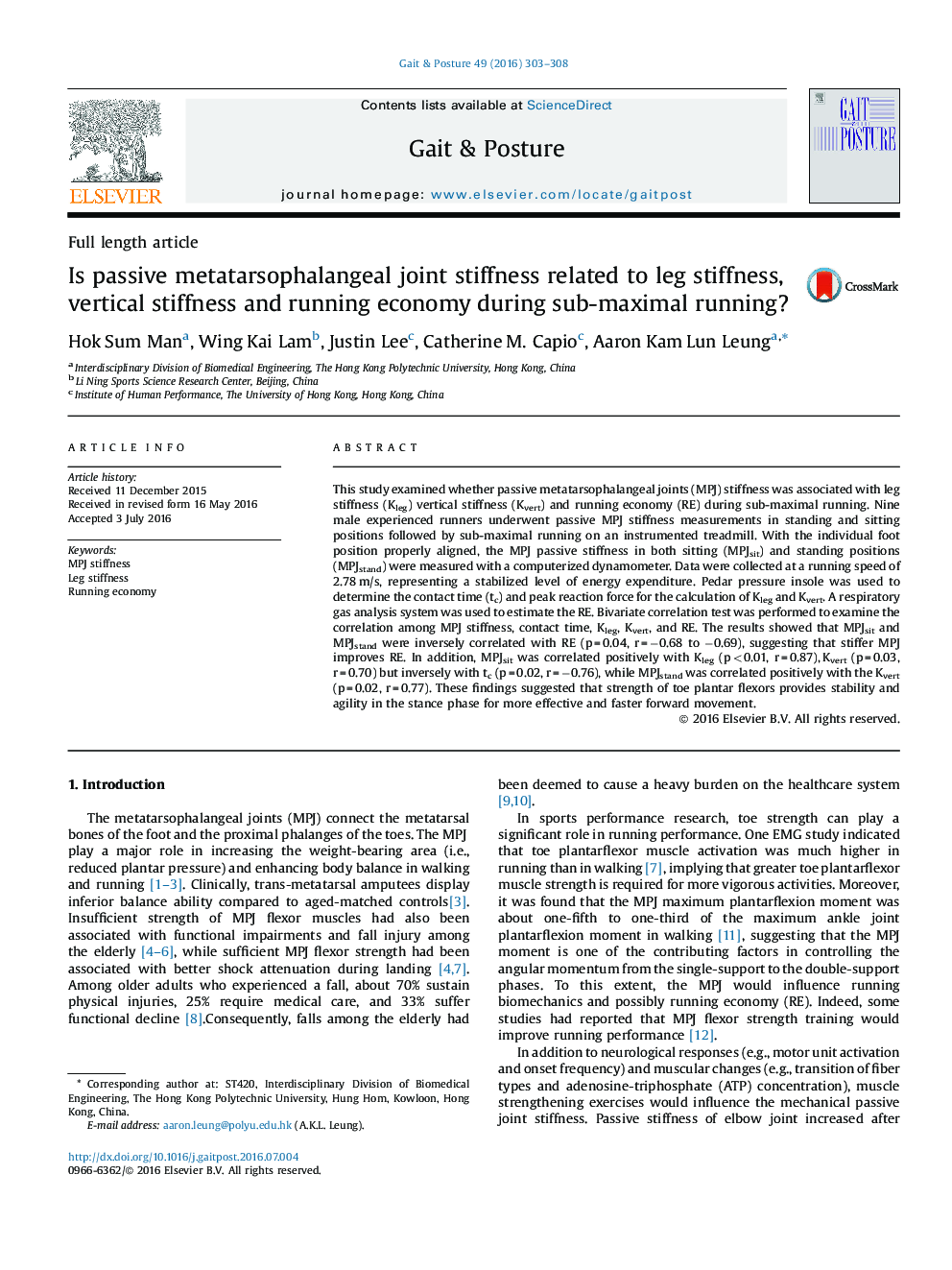| کد مقاله | کد نشریه | سال انتشار | مقاله انگلیسی | نسخه تمام متن |
|---|---|---|---|---|
| 6205483 | 1603846 | 2016 | 6 صفحه PDF | دانلود رایگان |
- MPJ passive stiffness in sitting position is highly correlated to leg stiffness in running.
- MPJ passive stiffness in sitting position is moderately correlate to vertical stiffness in running.
- MPJ passive stiffness in either sitting and standing position is not correlated to running efficiency.
This study examined whether passive metatarsophalangeal joints (MPJ) stiffness was associated with leg stiffness (Kleg) vertical stiffness (Kvert) and running economy (RE) during sub-maximal running. Nine male experienced runners underwent passive MPJ stiffness measurements in standing and sitting positions followed by sub-maximal running on an instrumented treadmill. With the individual foot position properly aligned, the MPJ passive stiffness in both sitting (MPJsit) and standing positions (MPJstand) were measured with a computerized dynamometer. Data were collected at a running speed of 2.78 m/s, representing a stabilized level of energy expenditure. Pedar pressure insole was used to determine the contact time (tc) and peak reaction force for the calculation of Kleg and Kvert. A respiratory gas analysis system was used to estimate the RE. Bivariate correlation test was performed to examine the correlation among MPJ stiffness, contact time, Kleg, Kvert, and RE. The results showed that MPJsit and MPJstand were inversely correlated with RE (p = 0.04, r = â0.68 to â0.69), suggesting that stiffer MPJ improves RE. In addition, MPJsit was correlated positively with Kleg (p < 0.01, r = 0.87), Kvert (p = 0.03, r = 0.70) but inversely with tc (p = 0.02, r = â0.76), while MPJstand was correlated positively with the Kvert (p = 0.02, r = 0.77). These findings suggested that strength of toe plantar flexors provides stability and agility in the stance phase for more effective and faster forward movement.
Journal: Gait & Posture - Volume 49, September 2016, Pages 303-308
